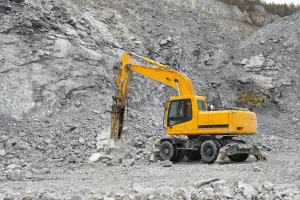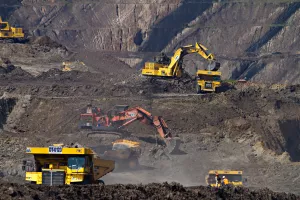How to Check if Hydraulic Cylinder is Leaking Internally
Internal leaks in hydraulic cylinders can be caused when hydraulic fluid unintentionally flows from one side of the piston to the other. This happens due to worn-out seals, cracks, or issues with the piston. In a hydraulic system, as fluid is restricted to its designated areas, it helps to maintain proper pressure and ensures smooth operation. But when an internal leak occurs the fluid escapes, resulting in pressure loss and a decrease in overall system efficiency.
The Impact of Internal Leaks
Internal leaks can affect your machinery in various ways, from minor to more serious safety concerns. When fluid leaks inside the cylinder, it reduces the amount of force generated which slows down the cylinder's ability to extend or retract causing additional wear on equipment, increasing costly repairs and downtime. From a safety point, unpredictable movements caused by internal leaks can also present hazards for operators working with or near the equipment.
How to Spot Internal Leakage
Physical Signs: You might notice oil stains or puddles forming underneath the equipment, which can signal that fluid is leaking through internal pathways. You may also hear unusual noises, like hissing or gurgling, which could indicate fluid is moving where it shouldn't be. Additionally, signs of wear, such as damage to the cylinder, piston rod, or seals, can point to an ongoing leak.
Performance: Internal leaks often affect how well your machinery performs. If the hydraulic cylinder is extending or retracting more slowly than normal, it may be a sign that fluid is leaking inside. Erratic or jerky movements are another indicator, as leaks can cause uneven fluid distribution. You might also notice the overall system feels less efficient, needing more power to do the same tasks.
The Importance of Regular Maintenance
By checking your hydraulic cylinders regularly, you can spot signs of wear or small leaks early on. This not only helps maintain your system’s performance and safety but also extends the life of the equipment.
Repair Solutions
- Seal Replacement: Worn-out seals are a common cause of internal leaks. Replacing them can often resolve the issue quickly.
- Cylinder Repair or Replacement: If the cylinder itself is worn or damaged, replacing it may be necessary to stop the leak.
- Piston Rod Repair: A bent or damaged piston rod can also cause leakage. Repairing or replacing the rod may be required in such cases.
Addressing internal leaks in hydraulic cylinders is crucial to keeping your systems running efficiently and safely. By learning to recognise the signs of leakage, performing regular inspections, and using effective repair strategies, you can ensure that your hydraulic equipment continues to function reliably over time.
Replacing hydraulic cylinder seals and parts
At FPE Seals, we’re here to help you maintain the highest standards of quality and safety in your operations. Can't find what you're looking for? Our expert teams can source hard-to-find items or custom-manufacture a full range of parts, including wiper seals and piston rings in metric or imperial to meet every customers' needs.
What to read next...

The Importance of High-Quality O-Rings and Seals in the Construction Industry
Read more
The importance of mechanical seals when reducing water consumption in mining
Read moreSign up to our newsletter
Don't forget to subscribe to our newsletter to receive details of our latest special offers and new products.
Darlington
Telephone: +44 (0) 1325 282732 Email: sales@fpeseals.com
Doncaster
Telephone: +44 (0) 1302727252 Email: doncaster@fpeseals.com
Aberdeen
Telephone: +44 (0) 1224648999 Email: sales@swanseals.co.uk
The Netherlands
Telephone: +31 (0) 162581060 Email: info@fpeseals.com

